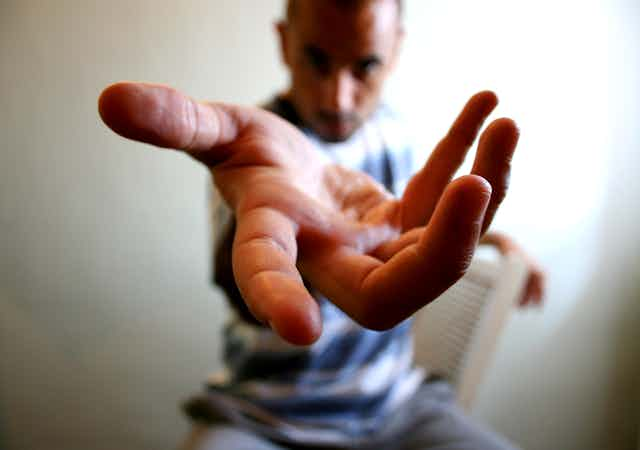It may seem silly to ask yourself if your index finger is part of your body, but that question is actually perfectly reasonable in neuroscience research - and has led to important insights into key brain functions.
In a paper published in The Journal of Physiology today, we, along with Simon Gandevia and Lee Walsh at Neuroscience Research Australia (NeuRA), showed how we were able to trick participants into believing an artificial finger was part of their body.
Day to day, the human brain uses sensory signals from what we see and feel to maintain and update an internal representation of the body. This helps plan and generate movements in order to interact with the world.
Our research shows that inputs solely from muscle proprioceptors (sensory receptors that inform us about the length of our muscles) can quickly alter our brain’s internal body representation.
This flies in the face of previous work, which has assumed that two or more types of sensory information are required to modulate this internal representation.
A touching experiment
In our experiment, the participant had their eyes closed and placed their right index finger in a pipe that could be mechanically linked to an artificial index finger - as shown in the photo below.

Although in the same orientation, the artificial finger was located 12cm above participant’s right index finger.
The experimenter then positioned the participant’s left index finger and thumb on either side of the artificial finger in order to be able to move it back and forth.
On some occasions, the mechanical link was engaged and movements of the artificial finger and the participant’s right index finger were identical (synchronous), but on other occasions, the mechanical link was disengaged and movements were uncoupled.
Local anaesthesia was used for some of the testing to temporarily remove skin and joint sensory inputs from the participant’s index fingers and thumb involved in the experiment.
An illusion of distance (or lack thereof)
Following synchronous movement between the artificial finger and the right index finger, participants reported that their right and left index fingers were closer together (even level!) compared to when the movement was not synchronous.

This “illusion” of the fingers coming closer together was associated with participants feeling they were holding their own index finger: the brain had incorporated the artificial finger into its internal representation of the body.
During the course of this experiment, we discovered a new type of sensory illusion.
With their left hand located 12cm above their right hand, the simple act of grasping an artificial finger made participants feel that their hands were much closer together.
Grasping the artificial finger induces a sensation in some participants that their hands are level with one another, despite being 12cm apart.
This illusion demonstrates that our brain is a thoughtful (yet at times gullible!) decision maker: it uses available sensory information and memories of past experiences to decide what scenario is most likely, such as: “my hands are level.”
This new illusion is in line with the effect that was observed with the synchronous movement of the artificial finger and the participant’s index finger.
In both cases, the brain generates many possible scenarios:
- I am holding my finger
- I am holding an artificial finger
- I am holding someone else’s finger
and rapidly compares them for consistency with incoming sensory information.
It goes with the best “match” even if it is wrong.
Just one input needed

These discoveries provide important clues about how the brain uses sensory signals to generate and update an internal representation of the body. It also expands our current understanding of how the brain decides what is part of our own body, and exactly where these body parts are located.
Contrary to the previous theories, multiple sensory inputs (such as skin and vision) are not required to change this internal body representation.
In addition, the new “grasp illusion” shows that these changes in body representation can occur in seconds rather than minutes.
These discoveries will also provide new insight into clinical conditions where this aspect of brain function is disrupted due to changes in the central or peripheral nervous system. Examples of such conditions include stroke, schizophrenia and phantom limb syndrome following amputation.
These findings could lead to new clinical interventions where the addition or the removal of specific sensory stimuli is used to change someone’s body image.

